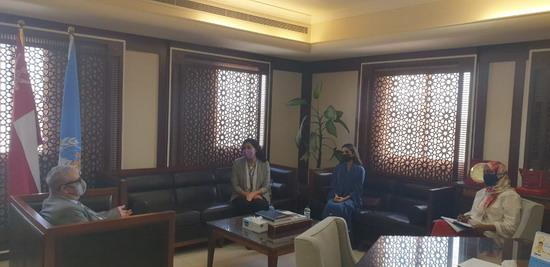
The meeting started with a discussion on the logo of the campaign that will reflect the three nutrition elements (ingredients) being addressed, namely salt, sugar and fat. The design of the logo is ready and a few comments were made on its modification. Approval of the final logo shall be agreed by all three campaign partners.
The second issue discussed concerned the measuring of salt, sugar and fat content in highly-consumed food products by food laboratories. The Department of Nutrition will be in communication with national laboratories, including the municipality, Sultan Qaboos University and private laboratories. The Department of Nutrition will also explore the possibility of sending products to international laboratories.
Development of a national plan to identify the top 5 food contributors to salt, sugar and fat consumption was then discussed. Identifying the foods, their manufactures and key restaurants will be done through surveys, focus groups discussions, etc. In addition, there was discussion on the development of plans to reduce salt, sugar and fat content in the identified foods, starting with food manufactures, followed by restaurants.
Finally, the parties agreed to hold task force meetings regularly to discuss studies, experiences, and current and future work, in line with the campaign's objectives. The meetings will be documented and communicated through newspapers, social media and online websites.
The timeframe for the campaign is divided into the four quarters of 2021, with each quarter having specific goals and activities to be fulfilled by a particular stockholder. The overall goals of the campaign are to:
- Reduce salt, sugar and saturated fat content in food products
- Work with food manufacturers and restaurants to progressively reduce salt, sugar and fat in their products
- Raise awareness among the population to reduce salt, sugar and fat intake in their daily diet
- Establish consumer-friendly nutrition-labelling systems
- Advocate against marketing of unhealthy food products to children
- Review and update policies in governmental and private sectors
- Coordinate with other sectors for the campaign
- Build capacity in surveillance and monitoring




